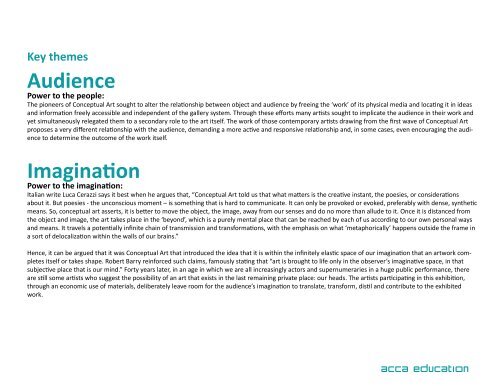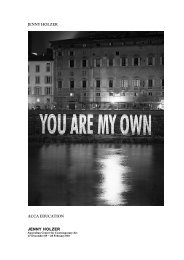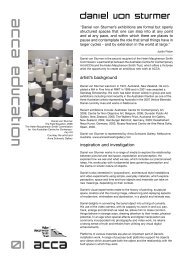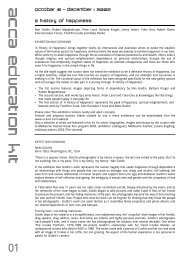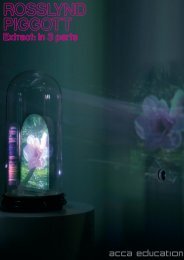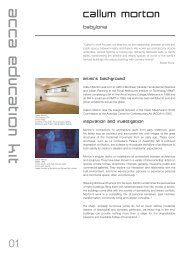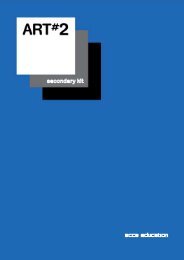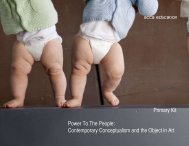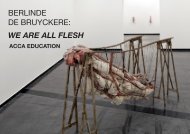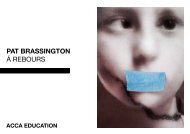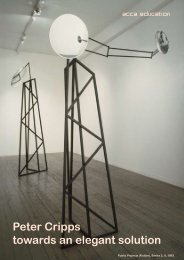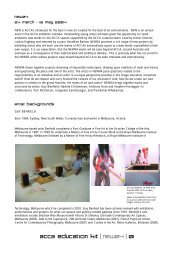Power To The People: Contemporary Conceptualism and ... - ACCA
Power To The People: Contemporary Conceptualism and ... - ACCA
Power To The People: Contemporary Conceptualism and ... - ACCA
Create successful ePaper yourself
Turn your PDF publications into a flip-book with our unique Google optimized e-Paper software.
Key themes<br />
Audience<br />
<strong>Power</strong> to the people:<br />
<strong>The</strong> pioneers of Conceptual Art sought to alter the relationship between object <strong>and</strong> audience by freeing the ‘work’ of its physical media <strong>and</strong> locating it in ideas<br />
<strong>and</strong> information freely accessible <strong>and</strong> independent of the gallery system. Through these efforts many artists sought to implicate the audience in their work <strong>and</strong><br />
yet simultaneously relegated them to a secondary role to the art itself. <strong>The</strong> work of those contemporary artists drawing from the first wave of Conceptual Art<br />
proposes a very different relationship with the audience, dem<strong>and</strong>ing a more active <strong>and</strong> responsive relationship <strong>and</strong>, in some cases, even encouraging the audience<br />
to determine the outcome of the work itself.<br />
Imagination<br />
<strong>Power</strong> to the imagination:<br />
Italian write Luca Cerazzi says it best when he argues that, “Conceptual Art told us that what matters is the creative instant, the poesies, or considerations<br />
about it. But poesies - the unconscious moment – is something that is hard to communicate. It can only be provoked or evoked, preferably with dense, synthetic<br />
means. So, conceptual art asserts, it is better to move the object, the image, away from our senses <strong>and</strong> do no more than allude to it. Once it is distanced from<br />
the object <strong>and</strong> image, the art takes place in the ‘beyond’, which is a purely mental place that can be reached by each of us according to our own personal ways<br />
<strong>and</strong> means. It travels a potentially infinite chain of transmission <strong>and</strong> transformations, with the emphasis on what ‘metaphorically’ happens outside the frame in<br />
a sort of delocalization within the walls of our brains.”<br />
Hence, it can be argued that it was Conceptual Art that introduced the idea that it is within the infinitely elastic space of our imagination that an artwork completes<br />
itself or takes shape. Robert Barry reinforced such claims, famously stating that “art is brought to life only in the observer’s imaginative space, in that<br />
subjective place that is our mind.” Forty years later, in an age in which we are all increasingly actors <strong>and</strong> supernumeraries in a huge public performance, there<br />
are still some artists who suggest the possibility of an art that exists in the last remaining private place: our heads. <strong>The</strong> artists participating in this exhibition,<br />
through an economic use of materials, deliberately leave room for the audience’s imagination to translate, transform, distil <strong>and</strong> contribute to the exhibited<br />
work.<br />
acca education


